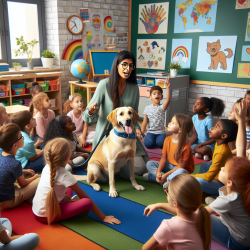Research Findings: Positive Attitudes and Emotions
The study conducted by Beetz (2013) involved third-graders who had a schooldog present one day per week. The results indicated significant improvements in positive attitudes toward school and positive emotions related to learning in the dog-class compared to a control class. These findings are statistically significant:- Positive Attitude Toward School: F = 10.769, df = 1, p = 0.002
- Positive Emotions Related to Learning: F = 4.479, df = 1, p = 0.042
Practical Implementation: How to Get Started
For practitioners interested in implementing a schooldog-teacher team, here are key steps based on the research:1. Ensure Approval and Safety
- Obtain permission from school authorities and parents.
- Screen for allergies and ensure the dog is healthy and well-trained.
2. Foster a Positive Environment
- Introduce the dog gradually and establish clear rules for interaction.
- Ensure the dog has a comfortable resting area and access to water.
3. Integrate the Dog into Learning Activities
- Use the dog in educational tasks, such as selecting math problems or rewarding good behavior.
- Encourage students to interact with the dog during breaks to reduce stress and promote positive emotions.
Encouraging Further Research
While the study shows promising results, it also highlights the need for more extensive research to control for variables such as teacher personality and teaching style. Practitioners are encouraged to document their experiences and share data to contribute to the growing body of evidence supporting animal-assisted education.Conclusion
Integrating a schooldog into the classroom can significantly enhance students' socio-emotional experiences and attitudes toward learning. By following the practical steps outlined and contributing to further research, practitioners can help create more supportive and effective educational environments.To read the original research paper, please follow this link: Socio-emotional correlates of a schooldog-teacher-team in the classroom.










